Project Summary
Customer
City of Ringgold, GA
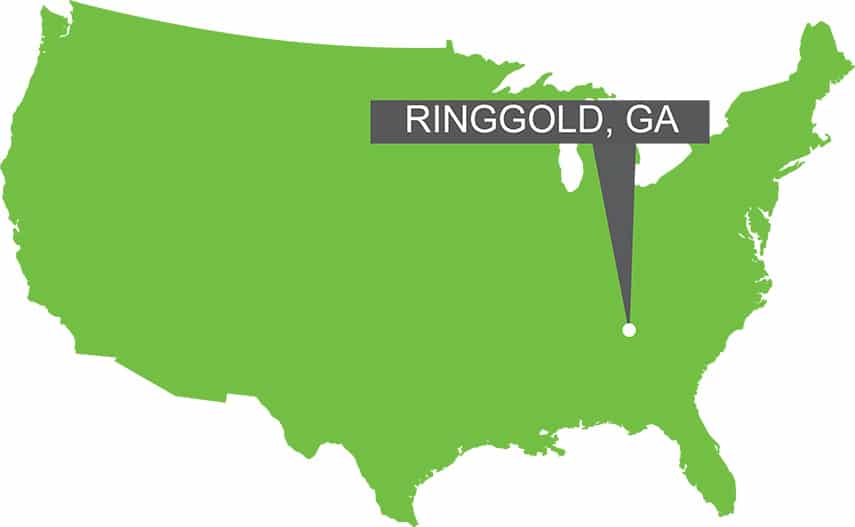
Type of Project
Spray-in-Place Pipe Rehabilitation
Results
- Significant savings in dollars and time
- Minimal disruption
- Increased safety
Rich in history, the city of Ringgold, Georgia is situated near the Tennessee border in Catoosa County and is home to approximately 3,600 residents. The City of Ringgold Water System operates a water plant that produces just under one million gallons per day, supplying drinking water to 1,400 households through a distribution system with 28 miles of water main.
According to Scott Black, Water Distribution Superintendent, the City Water System is committed to providing high-quality water to its customers, and its success has been recognized by the Georgia Environmental Protection Division Public Drinking Water Consumer Confidence Report Certification, an annual water quality report required by the Safe Drinking Water Act.
In 2019, the city experienced a rupture in one of its old cast iron main water lines. This line feeds the city’s entire industrial park, carpet mills and everything in that area, and accounts for approximately one-quarter of the total water produced by the city each day.
However, this main also runs under the interstate, a location that would have made traditional repair or replacement methods difficult, time-consuming, and disruptive. Further complicating the job was the presence of a pipe that connected to the main line; this pipe ran next to the edge of a 30-foot-wide creek – “so close that if you had excavated, the creek would have washed in on the pipe,” according to Black.
“We were looking at pipe boring rather than digging a trench to solve the problem, but that would have been astronomically expensive and taken approximately three months to complete,” he said.
Fortuitously, Black and his colleagues had just learned about USG Water Solutions’ (USG) Spray-in-Place-Pipe (SIPP) Rehabilitation Process and decided to use it to address the needed repair.
“
The cost savings was remarkable. Using SIPP was only one quarter to an eighth of the cost that it would have been to dig everything up.
—Scott Black, Water Distribution Superintendent, City of Ringgold
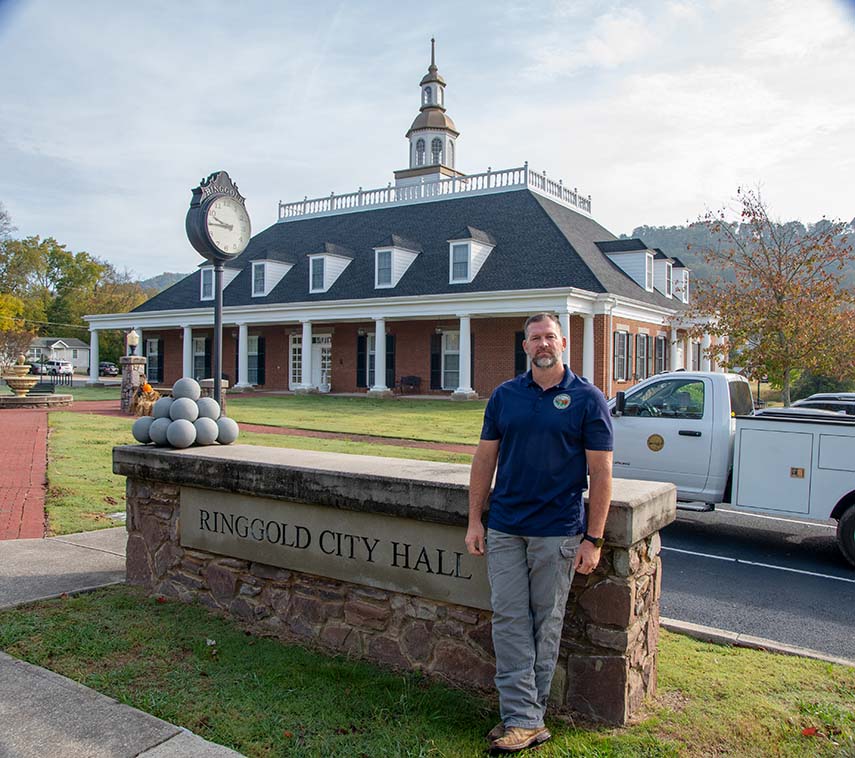
SIPP is an innovative, efficient, and long-lasting pipe rehabilitation solution that scrubs underground pipes clean and then uses a state-of-the-art, computer-controlled robotic spray to apply an internal epoxy pipe lining onsite. Once cured, the spray-applied epoxy coating creates an internal seal that can prevent leaks and helps protect against future corrosion and biological buildup.
The process can extend the pipes’ service life, helps reduce the frequency of maintenance, and can increase the flow capacity for greater system efficiency. Because the epoxy coating bonds with the pipes, it can also seal cracks and protect against the formation of future groundwater infiltration and tuberculation.
With SIPP, no major road or sidewalk tear-ups are necessary, and this rehabilitation solution works on pipes made of different materials and ranging from 4 inches to 36 inches in diameter.
USG uses a five-step SIPP rehabilitation process to restore aging underground systems.
- Thorough system analysis that includes mapping the system, utilizing CCTV to evaluate digitally recorded findings and then diagnose and identify a restoration plan.
- Preparation of the pipe interior for restoration by drag scraping and/or hydro-jetting to create a clean, smooth dry surface.
- A second CCTV inspection is used to determine if there are any leaks, groundwater infiltration or repairs that are needed outside of the SIPP scope of work. Then any repairs needed to address current piping issues are undertaken without the need for additional excavation to ensure that the pipe is properly prepared for the epoxy coating.
- The epoxy coating is applied. Once cured, this coating creates an internal seal that prevents leaks and helps protect against future corrosion and biological buildup. Because it bonds with the pipe, the coating also seals cracks and protects against the formation of future tuberculation.
- A final CCTV inspection is performed to confirm the quality of the lining. The pipe can then be reinstated. The utility proceeds with the chlorination/disinfection before system restoration.
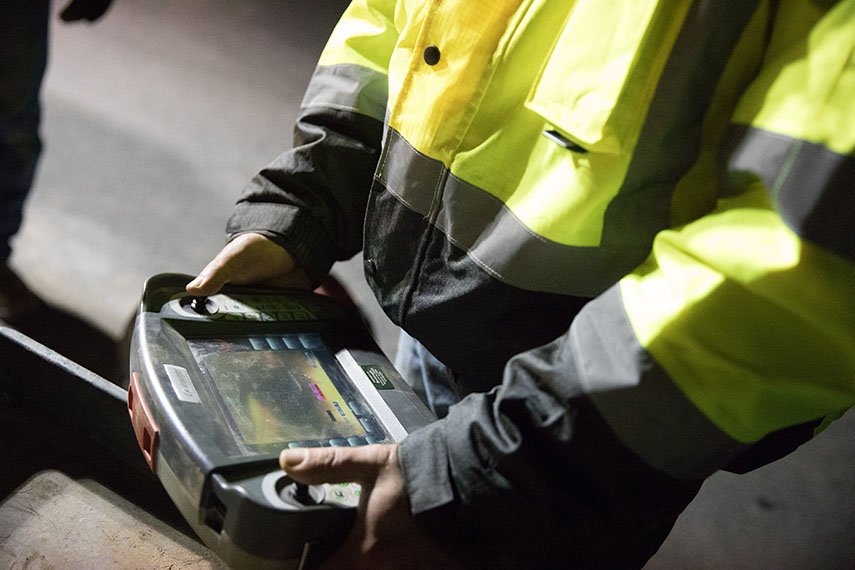
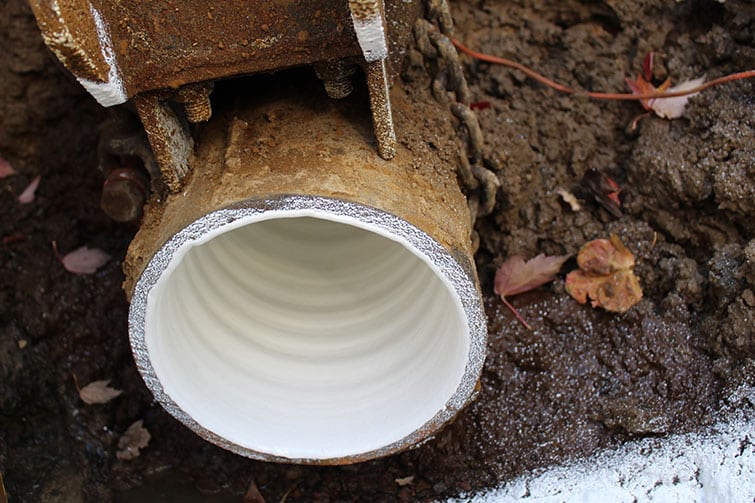
SIPP technology can yield an estimated cost saving of around 30% when compared to direct replacement, where it is necessary to dig up and replace the entire length of the pipe that needs attention. It also minimizes inconvenience to consumers by lining water pipes rather than digging them up and replacing them.
Black credits the leadership of City Manager Dan Wright for understanding the benefits of SIPP and advocating for its use. Using SIPP, the repair and rehab of approximately 1,000 linear feet of 12” main took only a week and was able to be completed before the onset of the rainy season, when the area being rehabbed is typically underwater because of the neighboring creek.
In addition to the time savings and minimal disruption, safety was another benefit as there was no need to dig a trench. But to Black, the cost savings was remarkable: “Using SIPP was only one quarter to an eighth of the cost that it would have been to dig everything up.”
